Pest control: What to look for in a rifle
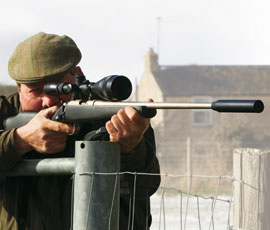
When it comes to keeping troublesome farm pests at bay it can pay to invest in a rifle. With the help of rifle maker Rupert Blackwall and BASC’s Simon Clarke, James Andrews looks at the options.
Few things are more frustrating than when Peter Rabbit and his pals start gnawing their way through the farm’s best wheat crop.
But rather than taking out the shotgun or spending sleepless nights waiting for the local gamekeeper to help, it might be sensible to invest in a rifle.
Unlike shotguns, which have an effective range of 30-40 yards, some small-calibre rifles can comfortably dispatch pests at 150 yards. This gives the shooter considerably more stealth and a much better success rate.
When it comes to picking the right tool for general farm pest control, it’s usually a toss up between the old faithful .22 RF and the trendy .17 HMR. Both are rimfire rifles – which means the firing pin strikes the rim of the bullet case rather than the centre – but each offers the shooter slightly different things.
Here we weigh up the pros and cons of each calibre and offer some advice for getting hold of a firearm certificate.
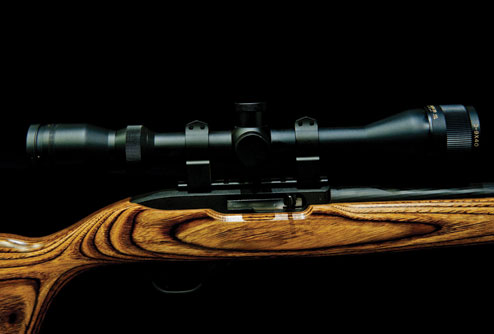
The popular .22 RF (rimfire) rifle has been around for decades and it’s generally regarded as the workhorse of the rifle world.
It can dispatch a rabbit at 80 yards and when fitted with a sound moderator it makes little more than a light pop when fired.
This means there is much less chance of spooking the quarry and seeing a field of rabbits disappear from view at your first shot.
Ammunition is also pretty cheap, with a fairly standard 40-grain soft-nose bullet costing about £6 for a box of 50.
There are pretty good discounts for buying in bulk, but the amount of ammunition a person can get hold of is limited by law.
Because the .22 RF has been around for years, there are also plenty of good second-hand models knocking about.
Some people also like the fact that the .22 RF is available in semi-automatic format as well as the traditional bolt action. These semi-automatic guns load the next round into the barrel on each trigger-pull and can make shooting smoother than working a bolt. Some semi-automatics can be prone to occasional jamming, though, and it is a matter of personal choice whether you opt for the more traditional bolt-action.
The .22 RF does have a significantly shorter range than a .17HMR, with 80 yards being the maximum for a lot of people. The trajectory of the bullet also starts to droop at longer distances.
Typical .22 RFs on the market
Ceská Zbrojovka (CZ) 452.22 – £375
The Czech-built CZ 452.22 is a firm favourite in the bolt-action camp. It’s well built, reasonably priced and accurate.
Five rounds can be slotted into a magazine below the bolt action and there is an option to upgrade this to 10.
Ruger 10/22 semi-automatic – £350
Ruger’s 10/22 is one of the most popular semi-automatic .22 RF rifles available. It’s lightweight, short, tough and won’t break the bank. It has a slick and reliable 10-shot rotary magazine.
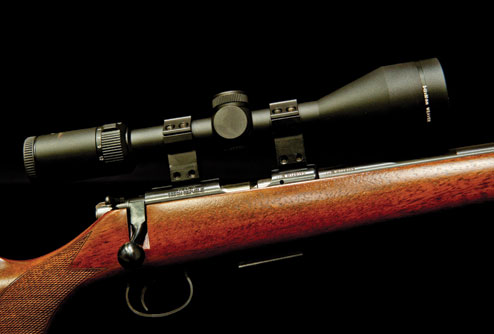
The .17 HMR (Hornady magnum rimfire) shell is a much more recent beast than the .22 RF and was developed by US firm Hornady in 2002.
It uses a smaller bullet than a .22 RF, but it has a bigger cartridge containing a more powerful charge. This means it has much higher muzzle energy and travels through the air much faster.
This has a few benefits. First, it gives it a much longer effective range than the .22 RF of 100-150 yards. And because the bullet travels with a much flatter trajectory, it’s more accurate towards the end of its range.
It also means it can dispatch bigger quarry than the .22 RF.
In the right hands, a .17 HMR is more than capable of dispatching a fox, however, the BASC recommends a bigger calibre if foxes are the main target.
Another plus of the .17 HMR is that its fast, supersonic bullet speed significantly reduces the risk of ricochet, particularly when used with ballistic-tipped bullets.
However, this means it makes a much louder crack than the .22 RF – even when fitted with a moderator – which may scatter quarry before the second shot can be fired.
Other downsides with the .17 HMR are that it can be too powerful for shooting small quarry at close range – some bullets can pass straight through and others will cause a bit of a mess.
Ammunition also has to be handled very carefully, and even the smallest amount of damage
to the tiny bullet will make it less-than-accurate.
The bullets are also much more expensive than the .22 RF’s with a fairly standard 17-grain Hornady V-max ballistic tip costing £14 for a box of 50.
Typical .17 HMRs on the market
Ceská Zbrojovka (CZ) 452 .17 – £415
This is essentially the same gun as the CZ 452.22, but it’s fitted with a smaller .17 barrel.
Anschutz 1517 – £600
German firm Anschutz offers a higher-end gun that’s a bit slicker to use than the mainstream CZ. The trigger pull is generally very smooth, as is the bolt action.
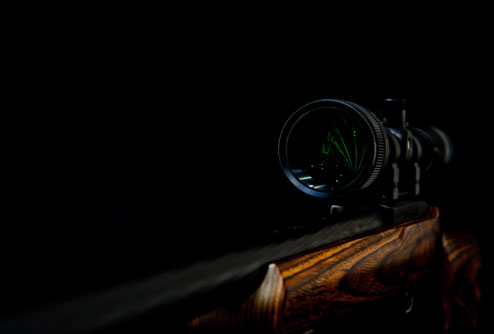
Every rifle needs a scope and these range from as little as £80 to an eye-watering £2,500. Happily, £80-250 will get you something that’s more than adequate for a .22 RF or .17 HMR, but the more you can afford to spend on a good scope, the better.
Here are a few examples:
Bushnell Sportsman (3-9×40) = £75
Simmons WTC15 (3-5-10×50) = £150
Leupold VX-1 (4-9×40) = £250
A good scope, rifle and ammunition are useless unless the scope is attached to the rifle with a decent set of mounts – buy the best you can and preferably choose some that were designed specifically for your rifle.
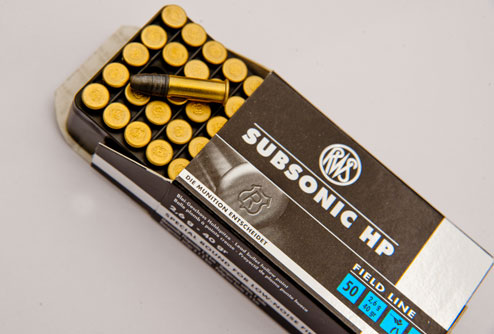
Rifle ammunition is a tricky thing to get one’s head round, so here is a quick guide to help cut the jargon.
The first thing to understand is the calibre of the bullet. In many cases, this is expressed in inches, so a .17 HMR, for example, measures about .17 of an inch in diameter.
The next part of the name varies; sometimes it describes the type of case the bullet sits in or simply states the name of the company that made it. The .17 HMR has both – Hornady (the maker), magnum (a long case with more charge than standard) and rimfire (the ignition system).
Here are a few common guns and ammunition types that you are likely to come across:
Common rimfire
.17 HMR (Hornady magnum rimfire) such as Anschutz 1517
.22 short
.22 such as CZ 452 .22
.22 WMR (Winchester magnum rimfire)
Common centrefire cartridges
.22 Hornet
.222 Remington
.223 Remington (similar to the 5.56mm ammunition used in the Army’s SA80)
.22-250 Remington
.243 Winchester
.22 RF | .17 HMR |
Ammunition cheap | Ammunition more expensive |
Many models available | Fewer models available |
Useful up to 80-100 yards | Best beyond 80 yards |
Subsonic (very quiet) ammunition available | Much louder than the .22 RF |
Ammunition robust | Ammunition delicate |
Self-loading rifles available | Bolt-action or single shot only |
May be used for target shooting | May not be used for target shooting |
Ricochets slightly more than .17 HMR | Ricochets slightly less than .22 RF |
The first hurdle when buying a rifle is applying for a firearm certificate. This is a more involved process than applying for a shotgun certificate. The law also takes a very different approach to the application. “With a shotgun certificate the police have to prove there is a good reason why someone can’t have one,” says The British Association of Shooting and Conservation’s Simon Clarke.
“But with a firearms certificate the shooter has to provide evidence of the good reason they should be allowed to possess a rifle and ammunition.”
This usually means the shooter has to have access to a suitable amount of ground for using the gun in question and a suitable quarry he wishes to control. Each new gun has to be applied for separately and those the shooter is permitted to own will be stated clearly on the certificate.
So, if you have permission to own a .22 RF, but decide to buy a .17 HMR or .222, you will have to reapply for permission to own that firearm.
Another condition on the certificate will be the amount of ammunition the shooter is permitted to hold.
Most farmers will have a legitimate claim for a rifle, but because each firearms department interprets the law slightly differently, there can sometimes be problems.
That means it’s sensible to join a shooting organisation such as the BASC. It will help you to iron out any of these problems and will provide insurance as part of the package, too.
Applying for a firearms certificate costs £50 and there is a slight discount for those who already hold a shotgun certificate. BASC membership is £66 a year.
For more information visit www.basc.org.uk

